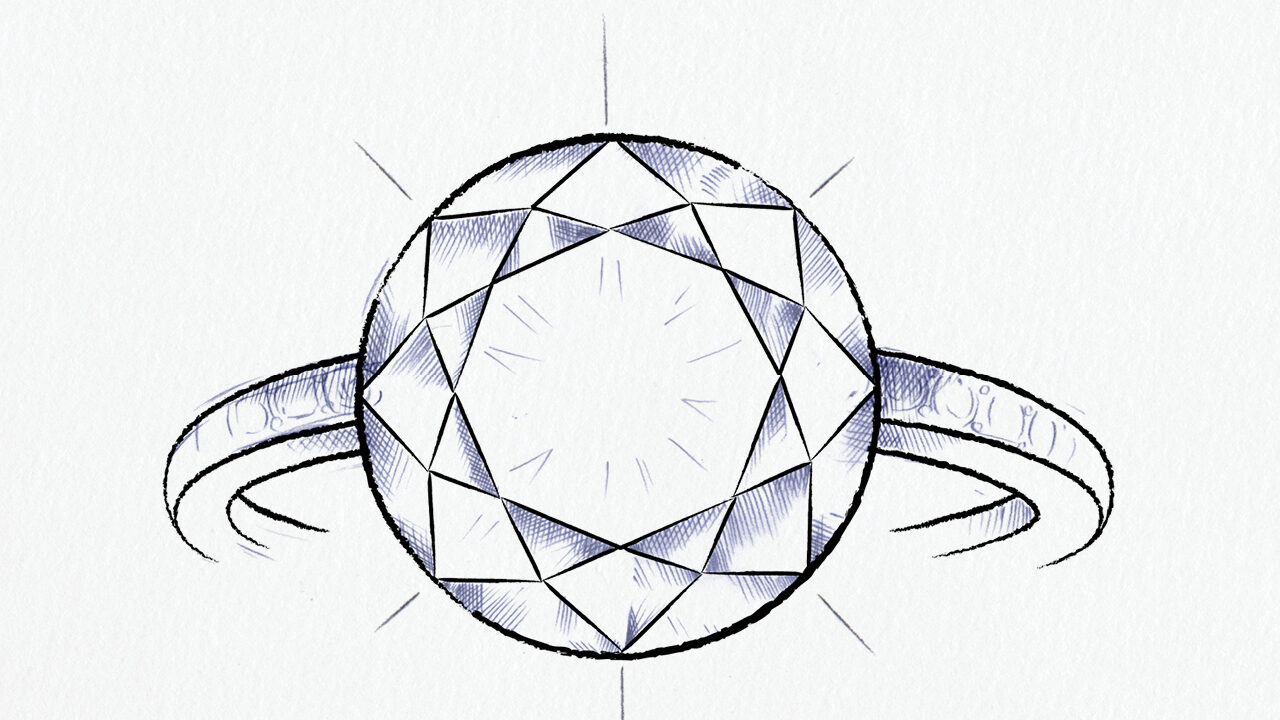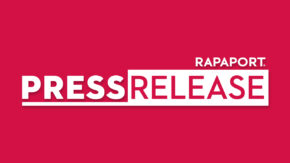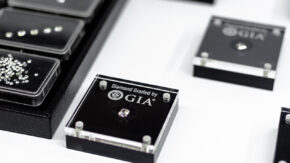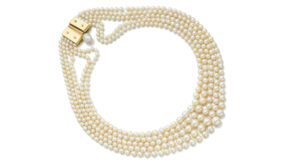While the everyday US diamond market may not sport the kinds of spectacular stones and stratospheric prices that grace auction headlines, last year did see an increase in both the average size and value of the diamonds people chose for their jewelry, according to industry analyst Edahn Golan.
“For natural stones, the average [weight] was 0.67 carats, up 2.7% compared to 2021,” he says. In addition, “while unit sales fell 11%, the average value rose 7.3%” — meaning that American consumers bought fewer diamond-set jewels but spent more per piece.
To find out the latest cut, color, clarity and size trends in the US market, Rapaport Magazine spoke to multiple dealers, from small and medium family-run firms to corporate giants that sell mostly to retailers and designers.
Rounding up
Round cuts are the most popular shapes, dealers say, though the size of choice may vary. Rounds account for 94% of New York-based J&R Ismaili Gem’s business, reports company president David Ismaili. Rounds are also best-sellers at fellow New York-based supplier RDI Diamonds, with sought-after sizes ranging from 0.75 to 2 carats, according to vice president of operations Andrew Rickard.
For Elliot Krischer, the most requested size for rounds is 1 carat, though the Esskay Gems owner and Diamond Dealers Club of New York president has noted increasing demand for 3 to 5 carats.
Stones weighing 2, 3 and 4 carats have been popular for Stuart Samuels, who heads the Diamond Manufacturers & Importers Association of America (DMIA) and owns New York-based Premier Gem. He’s seen particular interest in pairs for studs, as well as shortages of 6- to 10-carat goods.
Ovals and other stalwarts
In 2020, rounds made up 63% of purchased diamonds, but that number declined to 58% in 2022, says Golan; in contrast, ovals increased from 16% to 19%. But ovals are not the only rising stars.
Cushions and radiants are trending, according to Krischer, although supply is limited for good makes.
Samuels has also seen a surge in orders for marquise cuts, and Ronnie Vanderlinden, CEO of New York-based Diamex, confirms that ovals, marquises and pears are all top performers.
For Saul Goldberg, president of dealer William Goldberg in New York, ovals and cushions are doing well, as is the company’s patented Ashoka cut. At fellow New York firm InterFancies, ovals are number one, with cushions, radiants and emeralds next in line, reports president Gregory Telonis. James Allen CEO Oded Edelman cites solid sales of oval, cushion and emerald cuts at the online jeweler.
Off the beaten path
People today want something a bit different, says Yoran Dayagi of New York-based Dayagi Diamonds. He points to lozenges, hexagons, kites, shields, stars and animal motifs as increasingly popular in fashion and bridal jewelry.
Telonis has found that trapezoids, half-moons, tapered baguettes, shields, and trilliants sell nicely as side stones in the 10- to 50-point range, depending on the design. “New” old mine cuts and rose cuts in white, champagne and salt-and-pepper colors are winners for Harsheel Shah, owner of Los Angeles-based Prijems, as are “kites, hexagons and other geometric cuts, from 1 to 2.50 carats.”
Manak Jewels in San Francisco, California, features a range of rose, step, hexagonal, lozenge, pear and oval cuts. “Rose cuts provide a bigger look for engagement rings,” notes director Sumeet Sethi, adding that his best-selling range for fancies is 1 to 5 carats.
Some Clarity on Color
“In terms of clarity and color, the US market is very conservative and keeps sticking to SI-clarity, G- [to] I-color goods,” states Golan. Most of the dealers in this article agree, though Vanderlinden has noticed some regional differences.
“Two-carat rounds are strong in F to J colors,” he says, but in some areas, “notably the west and southwest, the softer [I through K] colors are preferred, whereas the east coast tends toward D to I.”
Telonis has seen demand for certain darker colors as well — particularly K through M —while Rickard says RDI’s most popular ranges are F to J, VS2 to SI2 goods.
While white diamonds may be the majority, fancy colors are highly desirable as well. “There are cycles in the diamond industry that tend to come every five to seven years,” says Alan Bronstein, a 42-year veteran of the fancy-color sector. Yellow diamonds may be trending now because they are the most abundant, he suggests, especially in radiant cuts that maximize their color.
“We see a very high demand for yellow in almost all sizes and saturations,” affirms Efrat Ashtar, office manager of the Ramat Gan-based Fancy Color Research Foundation (FCRF). “The main issue with supply is finding fancy-color diamonds with strong saturations in most hues.”
Fancy-color specialist Sammy Namdar agrees that yellow is popular in finer hues and clarities — mainly for a more affluent clientele, as prices continue to rise — “yet pink, blue and green have been coming back over the last two years.” Some stones have been more difficult to source, confides the owner of New York-based firm Namdar, and the closing of the pink-producing Argyle mine in Australia has complicated matters. “We can still get pink, but melee is harder to find.”
Whether white or color, says Golan, “consumers still appreciate the value of natural diamonds.”
This article is from the March-April 2023 issue of Rapaport Magazine. View other articles here.
Image: (Jon Rogers@Phosphor Art)



